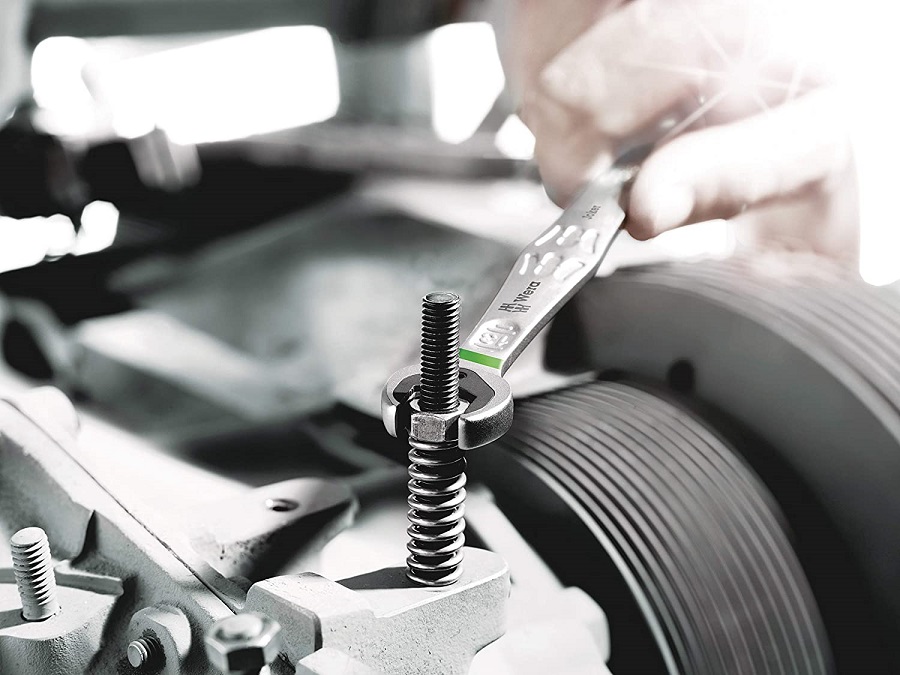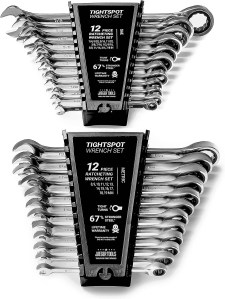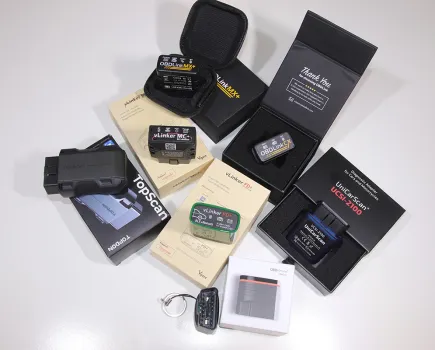The most common automotive tool of them all, wrench sets are vital for any automotive enthusiast. Here’s our wrench guide to explain what you need and why.
From home, to workshop, to professional race team, the humble wrench (or spanner for non-Americans) is the most common and useful hand tool of them all, with a huge variety of uses. While it’s a very basic tool that, with some notable exceptions, has no moving parts, there’s still a wide variety of wrenches out there that’s worth you knowing about. This way, you can make the decision on if you need to purchase them for yourself.
As well as differing main styles of wrench, also bear in mind that they come in both imperial (SAE) and metric measurements, your choice of which will be down to what you are using them on. Also, even if the design is the same, wrenches can vary wildly in quality, most notably making itself known in material strength and sizing accuracy, both of which are very important when it comes to putting high torque on fasteners, so getting good quality wrenches is just as important as getting the correct types of wrenches.
Wrench Guide
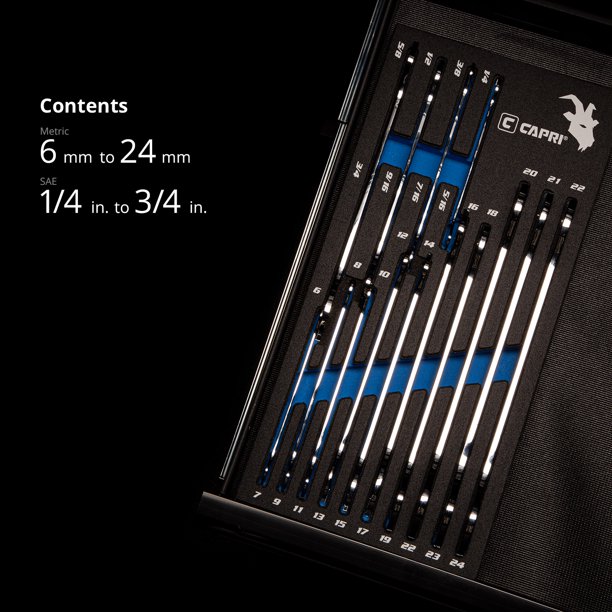
Open End
The most common wrench design is open end, and that is one with a U-shaped opening at each end of the wrench that grips two opposite faces of the bolt or nut. Each end is usually a different size and oriented at a slight angle to allow a greater range of movement in enclosed spaces by flipping the wrench over.
Open end wrenches are highly adaptable and usable in tight spaces where there would be no room to get a ring/box end wrench on the head of a bolt or nut, but generally the maximum torque you can apply before you risk slipping and rounding the fastener is lower.
If you want a high quality set with both SAE and metric fittings, consider this Capri Tools offering for $128.08 / £129.26.
We check 1,000s of prices on 1,000s of retailers to get you the lowest new price we can find. Fastcar may get a commission from these offers. Read more here.

Ring/Box End
These have enclosed ends that grips the faces of the bolt or nut, and are usually of a 12 point design for maximum use in tight areas, though specific 6 point ones exist for maximum grip of the nut or bolt head, at the expense of its usability in tight spaces where movement of the wrench is limited. Like open end ones, ring spanners usually are a for a different size fastener at each end, and most have offset ends to improve access to the nut or bolt. The offset end can vary depending on your kit, and it can be useful to have either a large offset or indeed zero offset, depending on the situation.
If you need a set, consider the Capri range, available in either metric ($/£149.99) or imperial ($/£99.99). Check out price comparisons for the 7-piece SAE set below:
We check 1,000s of prices on 1,000s of retailers to get you the lowest new price we can find. Fastcar may get a commission from these offers. Read more here.
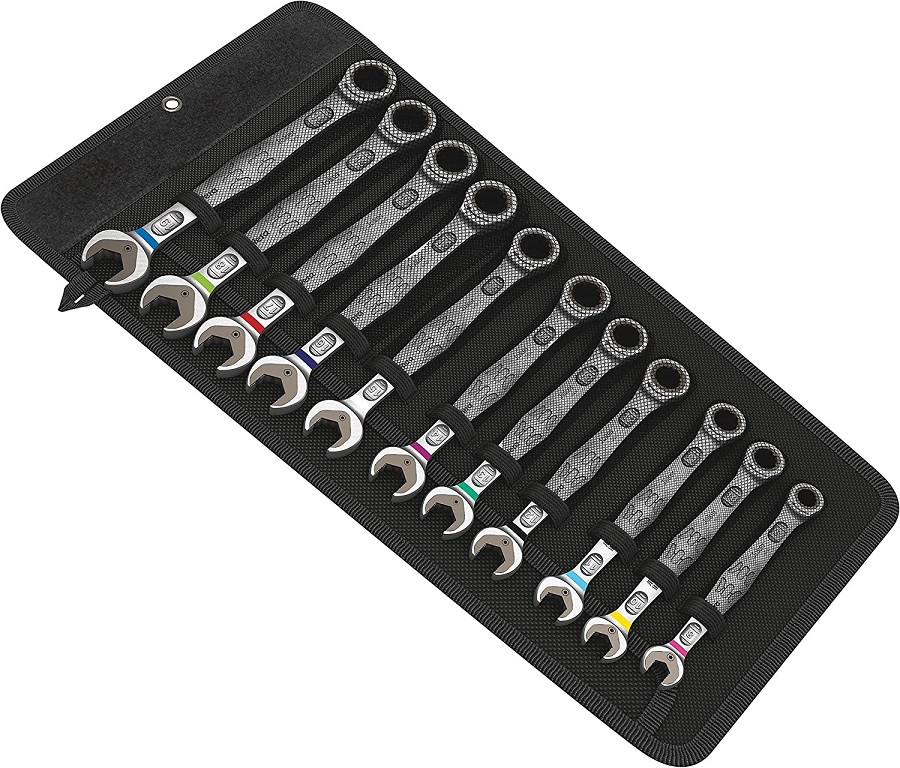
Combination
This type of wrench is the most common in modern kits, and is open end one side, and box/ring the other side, making for a very useful and adaptable tool. Both ends tend to be for the same size fastener, and generally being a non-offset design means having combination wrenches also solves the issue of wanting both flat and offset box/ring spanners.
Need a set? Consider opting for the high-quality Wera joker set, available in either metric ($244.47 / £175.00) or imperial ($104.84 / £153.00). Check out price comparisons for the metric set below:
We check 1,000s of prices on 1,000s of retailers to get you the lowest new price we can find. Fastcar may get a commission from these offers. Read more here.
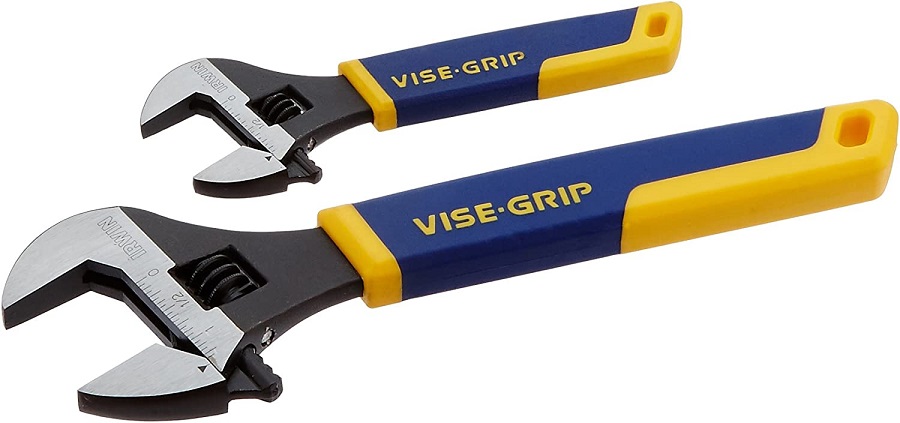
Adjustable
Adjustable wrenches are exactly what the name describes; they are open end wrenches that are adjustable for a wide variety fastener sizes. While in theory that sounds great, but in reality they are far more bulky than the equivalent size fixed wrench and generally can only be used for relatively light levels of torque without risking rounding off the nut/bolt in question. They are useful to have as a backup in a situation where you simply don’t have the correct wrench, but generally they are best used as a last resort.
Fancy adding some to your arsenal? Consider this set from Irwin ($/£26.99). View price comparisons below:
We check 1,000s of prices on 1,000s of retailers to get you the lowest new price we can find. Fastcar may get a commission from these offers. Read more here.
Ratcheting
This is a type of ring/box wrench with ratcheting rather than fixed ends. Depending on the design, you can reverse the ratcheting by flipping it over, or moving a small lever. This type is massively useful, as it combines the compact design of a normal wrench with the speed of a socket wrench. Generally these are as strong as a normal fixed wrench as long as it’s a good quality unit, but they are slightly more bulky so can sometimes be an issue in tight spaces.
Some of these are also available with a swivel head, which improves access in tight areas, but can sometimes increase the size a little, which can be counterproductive to the access situation.
Want to get some? Consider this metric & SAE combo set from Jaeger ($110.00 / £131.62). Check price comparisons below:
We check 1,000s of prices on 1,000s of retailers to get you the lowest new price we can find. Fastcar may get a commission from these offers. Read more here.
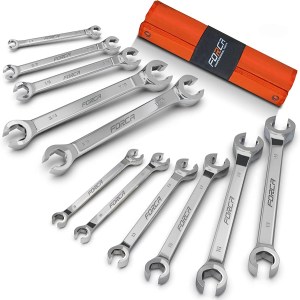
Flare Wrench
These are specialist wrenches that are invaluable if you ever work on hydraulic lines such as the ones found on brake and power steering systems. These are six sided box end wrenches with a slot in them just wide enough to go over the tube, while also being of a very strong design so the slot doesn’t allow for flex and therefore slip. This allows for maximum contact on the nuts versus the only other wrench option which would be an open end, which only would be contacting two of the six faces. This is vital as these types of fittings are usually made of softer metals such as copper, so are very easily rounded off with a normal open end wrench.
Need a set for you tool box? Consider this Forca package with both metric and imperial options included. Check price comparisons below:
We check 1,000s of prices on 1,000s of retailers to get you the lowest new price we can find. Fastcar may get a commission from these offers. Read more here.

